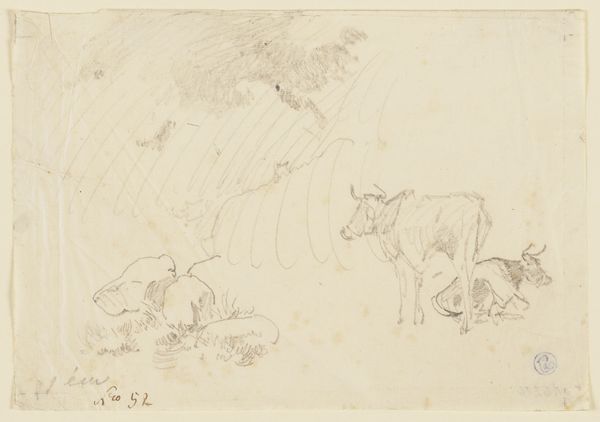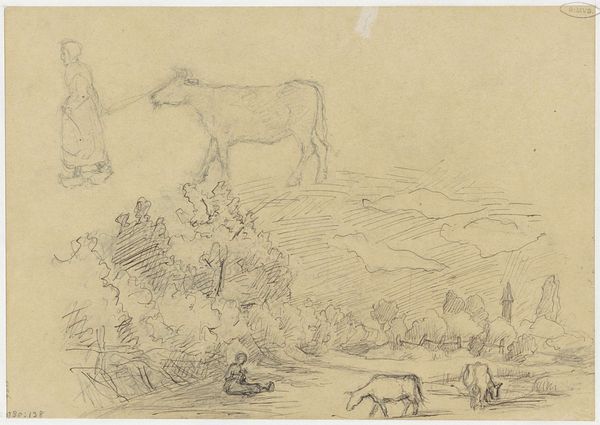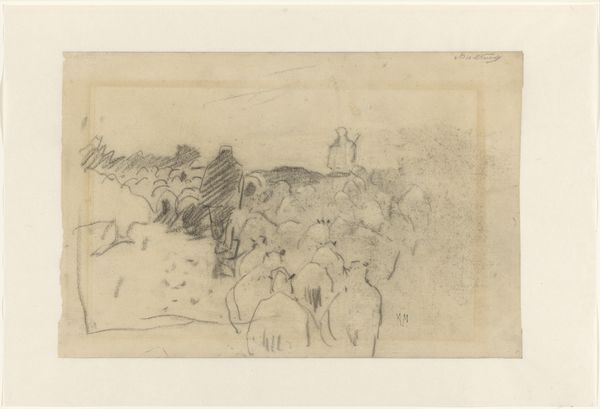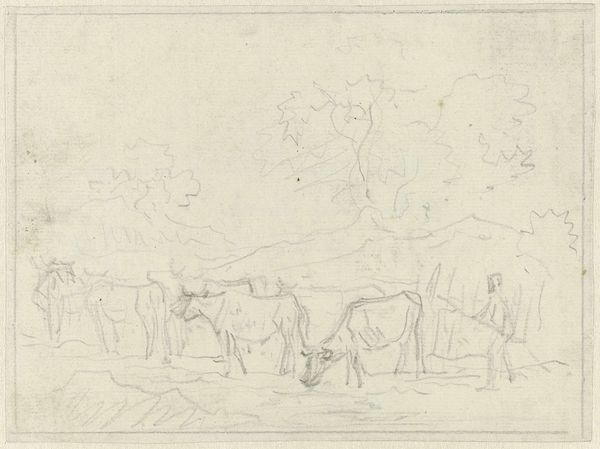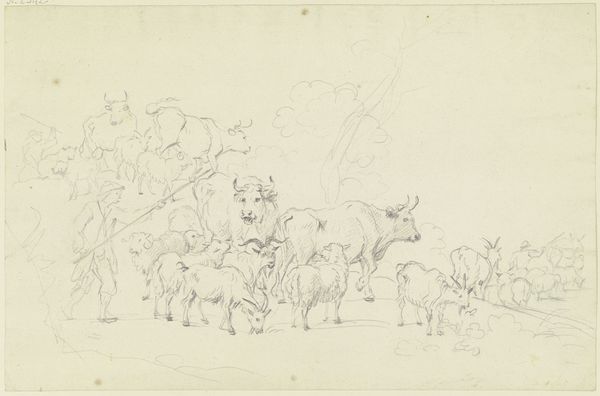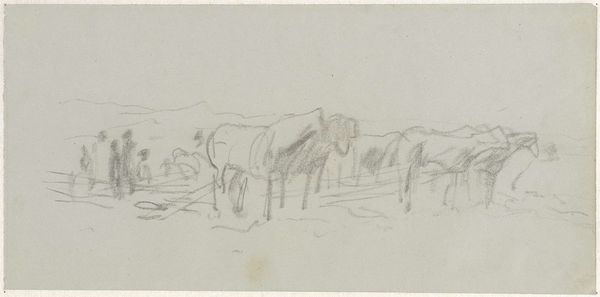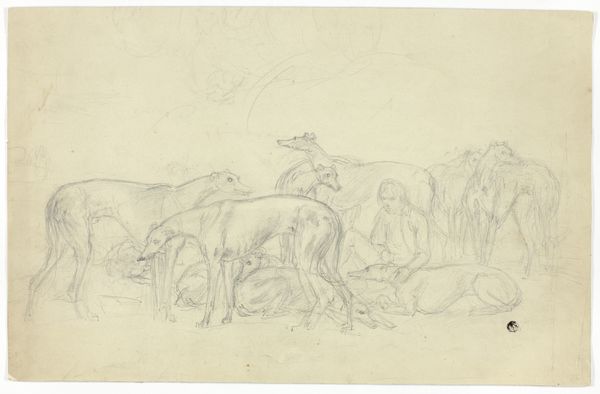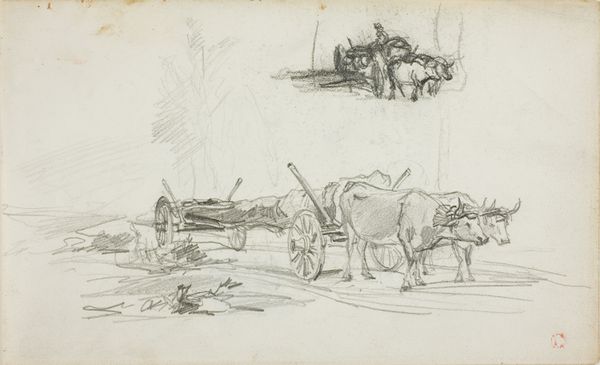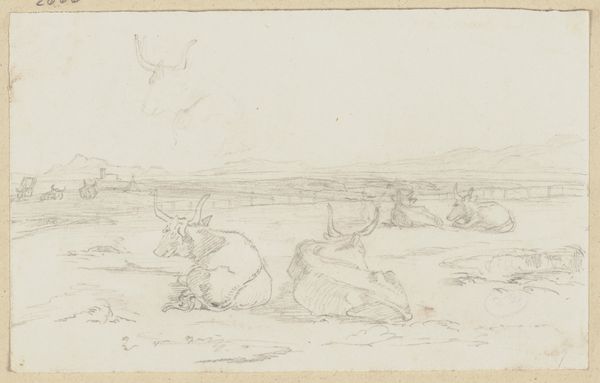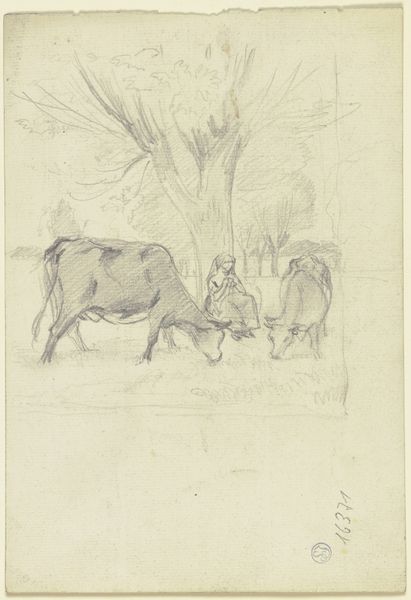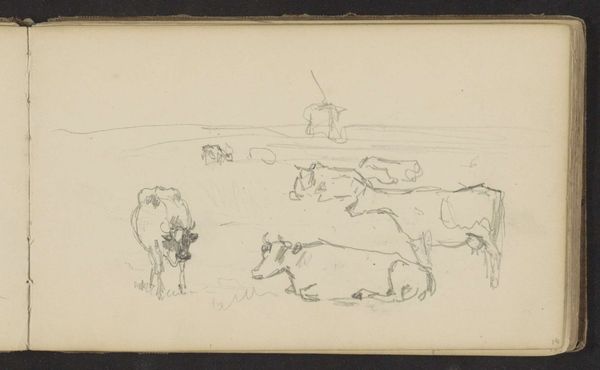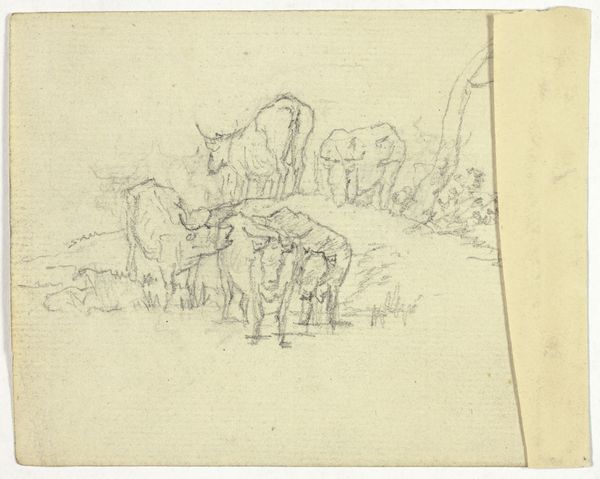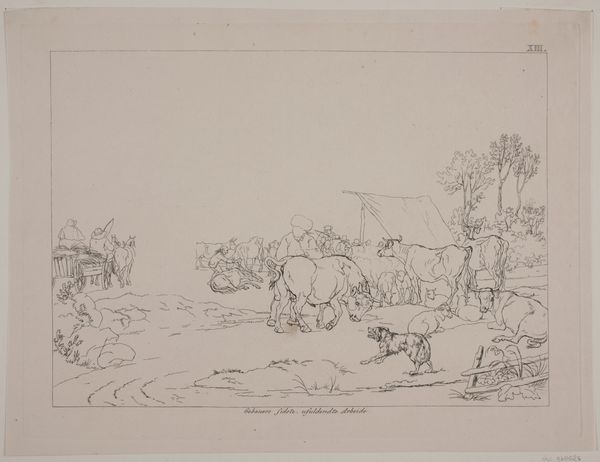
Dimensions: 89 mm (height) x 154 mm (width) (bladmaal)
Editor: We’re looking at "Malkepladsen ved Dyrehavegård" created in 1895 by Theodor Philipsen. It’s a delicate pencil drawing, and there’s a wonderful stillness about the sketched figures of the cows beneath the tree. What immediately jumps out at you in this piece? Curator: It's intriguing how Philipsen captures a landscape primarily through line. Note how the differing densities of the pencil strokes, rather than shading in the traditional sense, define form and space. Observe how the cows are delineated. There is no strong tonal modeling. Instead, Philipsen focuses on capturing their shapes and postures using economy of line. How do these structural elements affect your reading of the composition? Editor: I see what you mean; it's less about capturing light and shadow and more about pure shape and form. So the mood stems from that almost abstracted quality. Curator: Precisely. Consider also the surface of the drawing itself – the texture of the paper and the quality of the pencil. These material elements are integral to the work's aesthetic experience. The limited palette – effectively grayscale – forces us to engage with these more subtle formal elements. Editor: That’s a great way to put it – forcing us to see. It feels like he's stripping down the scene to its bare bones, focusing on the very essence of what constitutes a landscape. Curator: Exactly. The drawing, then, becomes less a representation of a place and more an exploration of artistic language. It also invites considerations of medium specificity. How does the use of pencil affect the image, compared, say, to painting? Editor: I hadn't thought of that, but you're right. There's an immediacy and simplicity to the pencil lines. The composition becomes about line and the essence of form rather than intricate detail, making the piece about art itself. I see that now. Thank you.
Comments
No comments
Be the first to comment and join the conversation on the ultimate creative platform.
